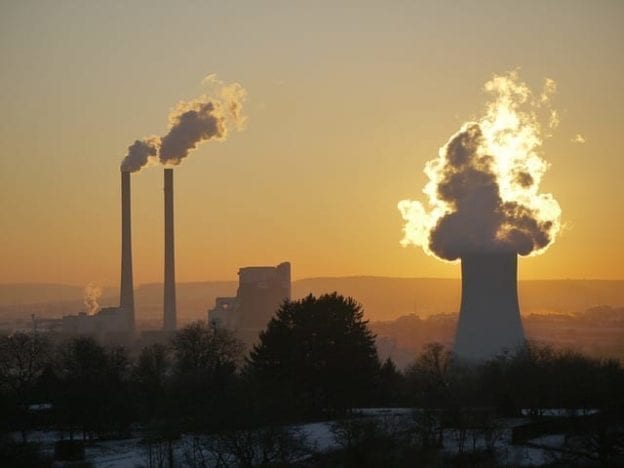Missouri v. Biden: The Benefits and Costs of Carbon Emissions
The post Missouri v. Biden: The Benefits and Costs of Carbon Emissions appeared first on POWER Magazine.

The Biden administration in February announced that for the remainder of 2021, federal agencies will conduct regulatory and environmental analyses assuming that the global social cost" of emitting carbon dioxide (CO2) is $51 per ton. This Social Cost of Carbon" is mostly directed toward agriculture and the fossil fuel industry.
The announcement's technical paper outlines the assumptions, and the uncertainties. It makes clear the $51 figure does not consider the social benefits of oil and gas. With similar assumptions and uncertainties, and for the sake of illustration, a simplified value of that benefit can be calculated in dollars per ton-with a global social benefit of carbon" of $5 million per ton (see the calculation later in this commentary).
Counting Costs, but Ignoring BenefitsThis calculation is the author's, not that of the states in this suit. The illustration shows that ignoring benefits when quantifying costs might skew decision-making. The failure of the social cost of carbon to consider the benefits is what lies at the heart of the states' suit (Missouri v. Biden, filed March 8, 2021). The states claim that, by design, the social cost of carbon skews the analysis, thus justifying more federal authority over regulatory areas traditionally left to the states.
COMMENTARY
The suit aims broadly, first with a challenge to Section 5 of the president's climate-crisis Executive Order 13990. The suit says the order mandates use of the social cost of carbon government-wide, calling that an unconstitutional presidential exercise of legislative power. The suit challenges that mandate as unauthorized by any statute. It also challenges the president's Interagency Working Group for adopting the mandate without following notice and comment rulemaking. In addition, it challenges the mandate as substantively arbitrary and contrary to law.
 Poe Leggette
Poe LeggetteUnderstanding the issues at play can be helped by an explanation of how the costs and benefits are determined. The Interagency Working Group's technical paper says the social cost is the monetary value of the net harm to society associated with adding a small amount of [carbon dioxide] to the atmosphere in a given year." Its purpose is to reflect the societal value of reducing emissions of the gas" by one metric ton. It tries to value the cost of net agricultural productivity," human health effects, property damage, risk of conflict," environmental migration of populations, and the value of ecosystem services." Certainly, it's difficult to put a dollar value on many of these categories.
But the social cost focuses on the value of reducing the net harm" of emissions. While it claims to consider the net" benefit to agriculture of having increased CO2 in the air, it does not consider the social value of the production of oil and gas, which also would increase CO2. Oil and gas companies would not produce fuel if society did not find their products useful. Agricultural workers would not farm, but for society's demand for their food. The beneficial value from farming, and oil and gas production, is not reflected in the social cost. For example, social cost tries to capture added costs of healthcare if emissions cause illness, but it does not capture the cost to society from shutting in the oil and gas used in the healthcare industry.
Calculating Social Benefits of Carbon EmissionsNo doubt there are many ways to calculate the social benefit on the same per-ton basis as the cost. My calculation took the following steps. From 1960 forward, four directly measured numbers have shown reasonably close correlation. Production of food and fossil fuels has increased; so have emissions of CO2. Global temperatures have been on the rise as well. Then there's the elephant in the climate policy room-global population has increased by 5 billion people, growing from 3 billion to nearly 8 billion.
The ability of the planet to provide food, heat, healthcare, and shelter for the additional 5 billion people is in large part attributable to the increased use of the products of oil and gas, particularly in agriculture. And, if you regard a human life as a social benefit, how much benefit would an economist calculate to sustain these extra 5 billion people? National Public Radio's Sarah Gonzalez posed the question of the economic value of a human life to Vanderbilt University economist Kip Viscusi in an April 23, 2020, podcast. His answer: about $10 million. From this, the economic value of 5 billion lives is about $50 quadrillion. Divide that by 10 gigatons of CO2 emissions per year, and the benefit is $5 million per metric ton.
One can quarrel passionately about the assumptions in the technical paper, and about the highly simplified calculus of benefits shown here. That appears to be at the center of the states' legal argument. And we should have that quarrel-on the record, through legal process, and with the strengths and weaknesses of the assumptions made transparent-before the social cost of carbon becomes the law of the land.
-Poe Leggetteis a partner with national law firm BakerHostetler and leader of its Energy Industry team. He focuses his practice on litigation and transactional work in the energy industry.
The post Missouri v. Biden: The Benefits and Costs of Carbon Emissions appeared first on POWER Magazine.